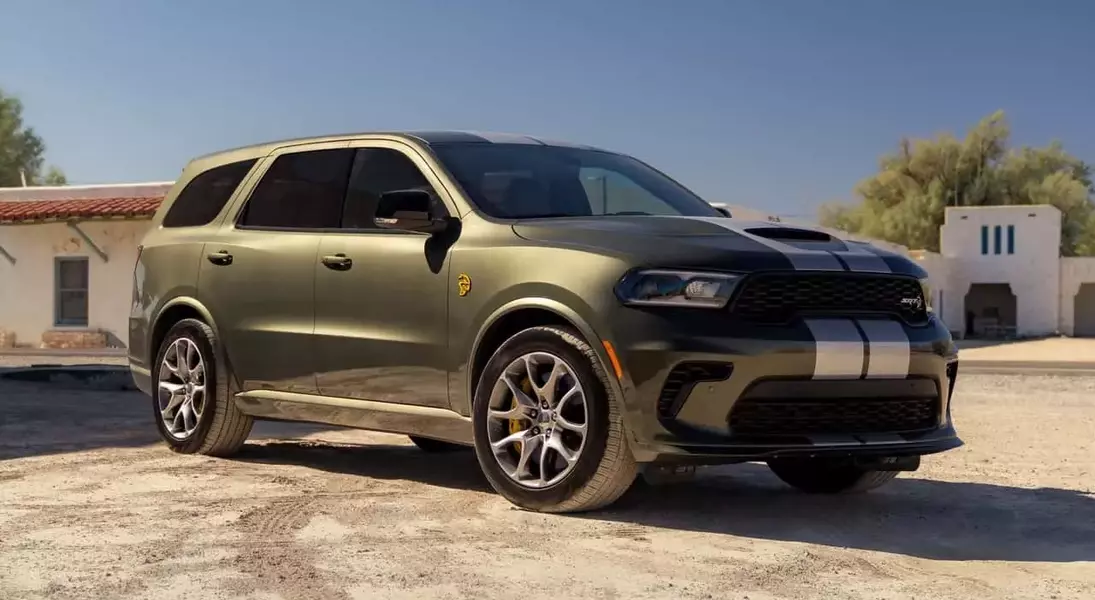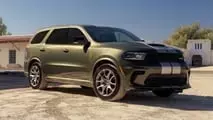








Dodge has announced the reintroduction of the V6 engine for its 2026 Durango GT trim, a strategic shift that broadens the model's appeal and lowers its starting price. This decision comes after an initial plan to exclusively feature V8 powertrains for the 2026 Durango line, demonstrating Dodge's responsiveness to market demands and its commitment to offering a diverse range of options for consumers. The return of the 3.6-liter Pentastar V6, which maintains its previous output of 295 horsepower and 260 pound-feet of torque, positions the Durango more competitively within the three-row SUV segment.
This reintroduction not only provides a more accessible entry point to the Durango family but also addresses the evolving preferences of buyers who may prioritize fuel efficiency or a lower initial investment over the raw power of a V8. With the V6 option, the Durango GT becomes a more attractive choice for those seeking a balance of performance, practicality, and affordability, helping it to stand out in a crowded market against popular rivals.
The Return of the Pentastar V6
Dodge's latest announcement confirms the comeback of the V6 engine for the 2026 Durango GT, a move that directly responds to consumer preference and expands the SUV's market reach. Initially, the 2026 lineup was set to be exclusively V8-powered, but the reintroduction of the 3.6-liter Pentastar V6 engine highlights a strategic shift. This engine, which delivers 295 horsepower and 260 pound-feet of torque, re-establishes an entry-level trim that is significantly more affordable than its V8 counterparts. The V6-equipped Durango GT will be priced at $40,990, including destination charges, making it $3,500 less expensive than the GT Hemi, which starts at $44,490. This price adjustment is crucial for the Durango to compete effectively with other popular three-row SUVs like the Kia Telluride, Ford Explorer, and Toyota Grand Highlander, all of which offer lower starting MSRPs. Additionally, the option to add all-wheel drive for an extra $2,000 enhances the V6 model's versatility and appeal, catering to a wider audience seeking a capable and cost-effective family vehicle.
The decision to bring back the V6 engine is primarily driven by an increased supply of Hemi engines, allowing Dodge to diversify its offerings. This engine was a staple of the Durango lineup since its third generation debut in 2010 for the 2011 model year, providing a reliable and efficient option for over a decade. While a new Durango generation is anticipated around 2029, the current model continues to receive updates to keep it fresh and competitive. Alongside the V6, Dodge maintains its commitment to performance enthusiasts with the 6.4-liter Hemi V8, producing 475 hp in the R/T trim, and the formidable Durango SRT Hellcat, boasting a supercharged 6.2-liter V8 with 710 hp. The Hellcat model has also seen an expanded availability in more states, further cementing the Durango's position as a versatile SUV that caters to both power and practicality. The current order books for the V6-powered GT are now open, signifying a definitive end to the brief all-V8 lineup for the Durango.
Strategic Pricing and Market Positioning
The reintroduction of the V6 engine significantly impacts the Dodge Durango's pricing strategy, making it a more accessible option in the competitive three-row SUV market. By bringing back the 3.6-liter Pentastar V6, Dodge has created a trim level that starts at $40,990, including the destination charge. This price point positions the Durango GT as a more budget-friendly choice, effectively reducing the entry cost by $3,500 compared to the V8 GT Hemi, which begins at $44,490. This strategic pricing move is designed to attract a broader customer base, offering an alternative to the higher-priced V8 models and addressing the demand for more economical options within the segment. The availability of all-wheel drive for an additional $2,000 further enhances the V6 model's value proposition, providing consumers with greater flexibility and capability without a substantial increase in cost. This move aims to boost the Durango's competitiveness against rivals that typically offer lower starting prices for their three-row SUVs.
Historically, without a V6 option, the Dodge Durango was often considered one of the more expensive three-row SUVs on the market, limiting its appeal to a niche audience primarily interested in V8 performance. The current market is saturated with strong competitors like the Kia Telluride, Ford Explorer, Toyota Grand Highlander, Chevrolet Traverse, and Jeep Grand Cherokee, all of which often present more affordable entry-level models. The return of the V6 directly addresses this gap, allowing the Durango to better contend for market share by appealing to value-conscious buyers. While the V8 engine has a loyal following due to its powerful performance, its older design has made it less competitive in terms of initial cost and potentially fuel efficiency compared to newer, often smaller-displacement engines offered by competitors. By diversifying its engine offerings, Dodge ensures that the Durango remains relevant and attractive to a wider demographic, balancing its reputation for performance with a renewed focus on accessibility and value in the evolving SUV landscape.
